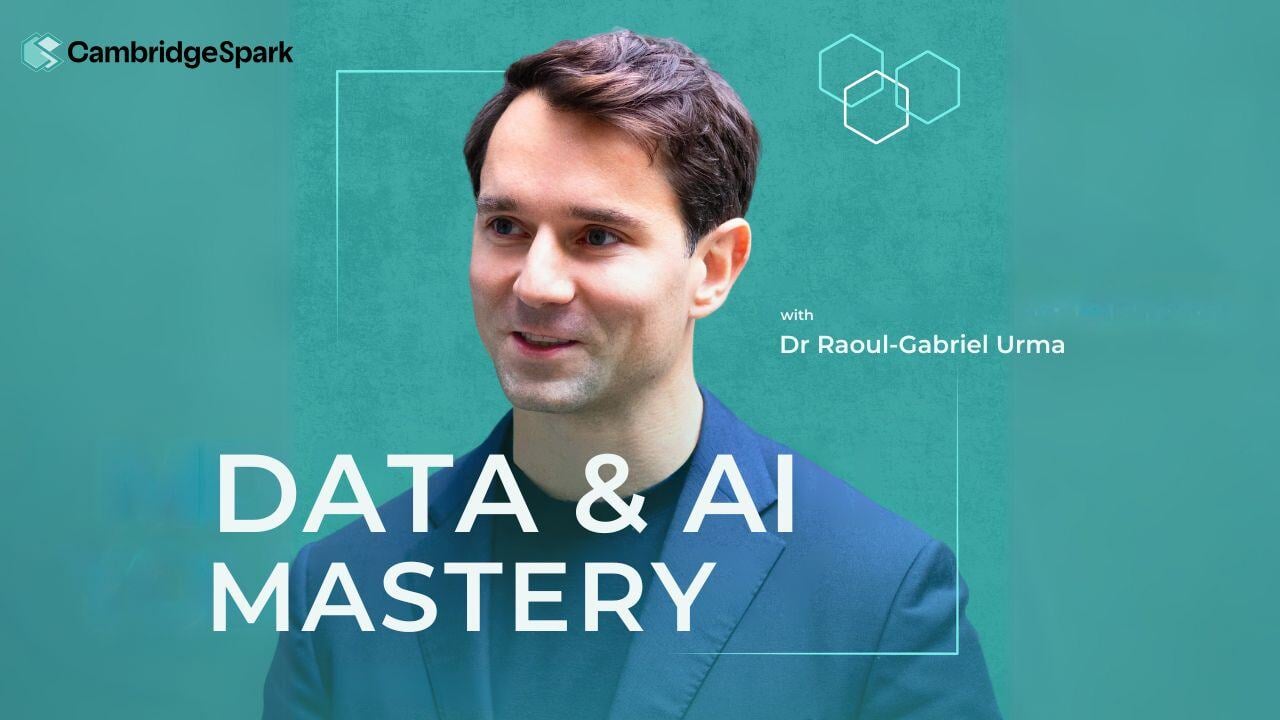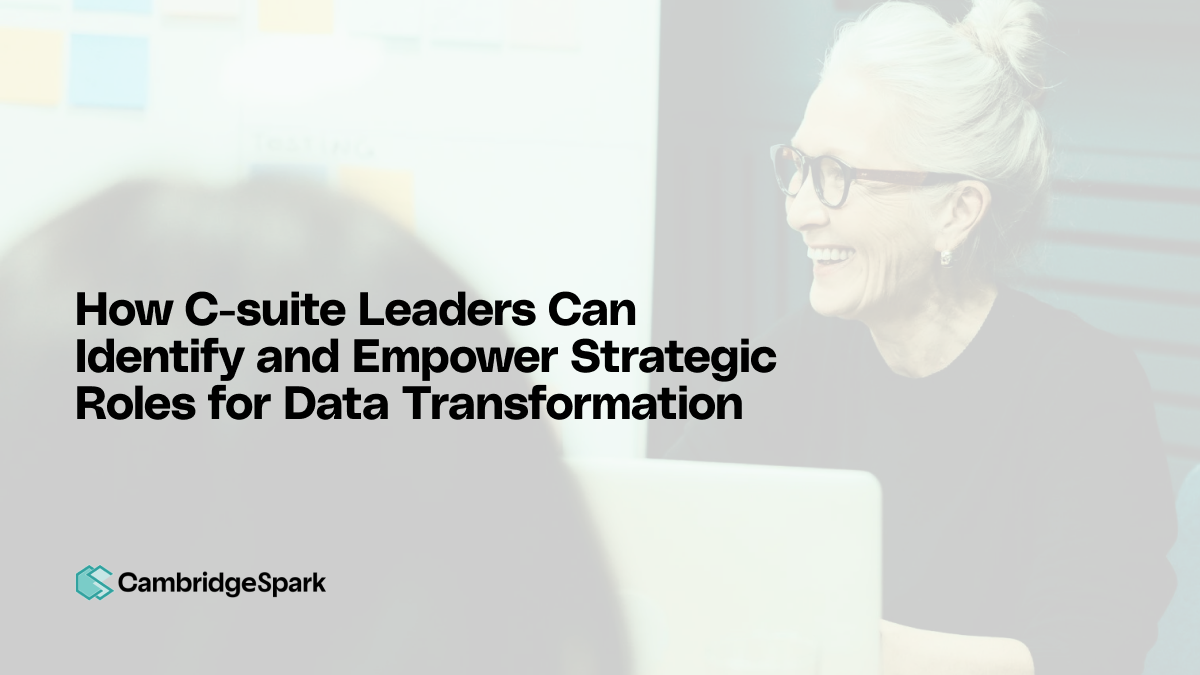Many C-suite leaders struggle with identifying data transformation leaders in their organisations.
They can often lack an understanding of the key characteristics and responsibilities of data initiative positions. Because of this, they struggle to help critical positions during data transformation.
This struggle can lead to inefficiencies in both managing the data transformation process as well as communicating it company-wide.
In this article, we will explore the key benefits of data transformation for your company.
We will provide a practical approach to data transformation, a clear framework for identifying key positions and their roles, and give actual examples of what empowering them looks like.
This actionable framework will not only improve the operational efficiency of your company but will help you create and take advantage of Data Leadership, foster a data-driven culture in the enterprise and achieve business goals more efficiently by showcasing ways of tracking the actual performance.
The Strategic Importance of Data Transformation for Modern Enterprises
Data transformation is the process of conveying raw data into an actionable format – suitable for analysis, integration, or various other organisational purposes. The process usually entails:
- Cleansing: Ensuring data quality by removing errors, inconsistencies, inaccuracies, or duplicates.
- Standardisation: Conveying data into a standard format or structure, it becomes consistent and comparable.
- Aggregation: Summarising detailed data into meaningful insights that allow for better analysis.
- Enrichment: Supplementing the existing set of data with complementary information. This provides a richer context for data-based decision-making and action.
Data transformation helps you transform raw data your business generates into actionable insights for various business activities, such as:
- Optimising operations
- Anticipating customer needs
- Enhancing marketing strategies
- Driving innovation through data-driven decision-making
- Improving financial forecasting and budgeting
- Identifying new revenue opportunities
- Strengthening risk management and compliance efforts
Those data-driven decisions enhance agility and competitiveness by enabling faster, more informed responses to changing market conditions.
The data transformation is the process that makes those positive changes happen in your business. By incorporating tools like AI, machine learning, and programming languages, you can turn extensive sets of unused data into a cohesive set of invaluable insights.
But businesses need more than the right technologies to use data to drive innovation and growth. The strategy, implementation, and analysis require skilful people in the right places.
Here’s how to identify and assign roles during data transformation:
Identifying Key Roles for Data Transformation in Your organisation
The first step towards a successful data transformation is identifying roles responsible for each part of the process. Let's take a closer look at a few of them:
- Chief Data Officer: Directing data initiatives and assessing compatibility with overall business strategy.
- Chief Analytics Officer: Deriving insights and strategically applying data
- Data Scientists: Utilising statistical methods, machine learning algorithms, and data visualisation techniques to inform business decisions
- Data Engineers: Managing the infrastructure supporting the processing of data
The specific roles will vary based on your organisational structure.
However, there are a few ways to assess who should be involved in your data transformation and their level of involvement.
Here are a few criteria:
Alignment of organisational goals with the position
The individuals involved in the data transformation should align with the desired outcomes.
For instance, if the goal is to drive sales, involve data scientists specialising in sales analytics.
Experience in data management and analysis
Data transformation's complexity necessitates personnel with sufficient experience and expertise to handle business data securely.
This encompasses a profound understanding of data governance, integration, quality, and security.
Employees experienced in handling sensitive data, implementing machine learning models, and developing data-driven strategies are vital to the transformation process.
Cross-Functional Collaboration
Data transformation requires shared effort, aligned goals, and a coordinated vision.
Each department contributes unique insights and data crucial for a comprehensive data strategy.
To facilitate this, implement integrated data systems and tools, enabling seamless data sharing and collaboration across departments.
This involves utilising data platforms that support real-time data access and analytics, promoting a unified approach to data management.
Strategic Roles to Lead Data Transformation
C-suite executives must lead the way in fostering a culture that embraces data, ensuring it becomes integral to the business.
What does leading data transformation look like in practice?
- Providing resources: To succeed in data transformation, teams need access to advanced analytical tools, cloud infrastructure, and cutting-edge technologies.
- Establishing authority and assigning leaders: Creating a clear hierarchy is vital to prevent data transformation efforts from becoming fragmented. Appointing roles like CDO or CAO ensures alignment between data teams and executive leadership.
- Supporting cross-functional teams: C-suite leaders should foster collaboration across departments, breaking down silos to drive shared goals in data transformation.
- Communicating and rewarding success: Leading by example, C-suite executives should recognise and celebrate contributions to data initiatives, showcasing their impact across the business.
Ultimately, the goal is to embed data-driven decision-making as a core mindset within the organisation. How can C-suite leaders create an environment that naturally supports this shift?
Lead by example
Using data as a tool for taking action and showcasing the process is a great way of engaging in actively creating a data-driven culture by C-level executives.
When employees observe their leaders making data-driven decisions, it reinforces the importance of data at all levels of the organisation.
A strong example of this leadership is Reed Hastings, the former CEO of Netflix.
He attributed Netflix’s success to understanding customer behaviour through data: ”what they watch, what they did and how they move through a website”.
His commitment to data-driven insights set the tone for the entire organisation, driving their competitive edge.
Communicate the value
To maintain momentum in data transformation, it’s crucial to regularly communicate its value.
Share success stories, updates on progress, and challenges faced throughout the process to keep employees engaged.
Acknowledging struggles and learning from mistakes creates a deeper understanding of the transformation journey and shows that obstacles are part of the process.
Encourage data fluency
For employees to embrace data, they must understand it. Equipping them with the necessary tools and training to engage in data-driven tasks ensures that they see efficiency gains in their daily work.
Check out how Cambridge Spark can help you provide your employees with the right tools and upskill your workplace.
Tom Buckham from Cambridge University Press & Assessment shared how upskilling through a Data Science Apprenticeship enhanced both his career and the enterprise:
“I needed to answer the question of how people were using the existing system and how much data we might have to migrate. [...] I remember thinking if I hadn't been able to answer that question using data and the tooling we’d been taught to use, then we may have ended up spending quite a lot of money ‘just in case’. It was a good example of how having some data analysis skills saved us quite a lot of money and allowed us to focus on other customer priorities.”
The Continuous Nature of Data Transformation
Data transformation is a continuous process, not a one-time initiative.
It involves consistently refining data analysis and improving performance through well-prepared insights.
Developing data leadership within an organisation—through training and partnerships with educational institutions—ensures companies stay ahead of the competition.
For example, Procter & Gamble executives provide managers with a “decision cockpit”, where they can use massive amounts (as much as 200 terabytes) of visualised data to quickly make informed decisions.
Overcoming Common Challenges in Data Transformation
Data transformation isn’t without challenges, and identifying these barriers is crucial for success.
- Resistance to change: Fear of modern technologies, such as AI, can lead to reluctance. Addressing these fears through training and early engagement helps alleviate concerns and fosters ownership of the transformation.
- Data silos: Lack of communication between departments can lead to inconsistencies and errors. Implementing centralised data platforms and clear governance policies enhances data sharing and quality.
- Change management issues: Data transformation isn’t just technical; it requires a shift in organisational culture. Strong leadership, clear communication, and employee support are key to a smooth transition.
Lisa Cooney, Product & Service Manager at TrendBible, unified siloed data analytics to save an estimated 647 hours annually, showing the impact of overcoming these common challenges.
Measuring the Impact of Data Transformation
Measuring the impact of data transformation is essential for evaluating its benefits, identifying areas for improvement, and ensuring long-term success. Setting measurable Key Performance Indicators (KPIs) provides a clear framework for monitoring progress and effectiveness.
Here are some KPIs and practical ways to measure them:
- Data accessibility: Measure the percentage of employees who regularly use data tools, indicating the organisation’s overall data fluency.
- Operational efficiency: Compare the time spent on data processing before and after automation to assess improvements in workflow.
- Revenue growth: Attribute cost savings directly to automation efforts, providing a clear link between data transformation and financial performance.
The selection of KPIs should align with the specific needs and goals of your organisation. For example, in the healthcare industry, which focuses on patient outcomes, performance can be measured by tracking patient-related metrics.
A compelling case study comes from Cambridge Spark apprentice Joel Hollingsworth, who reduced patient referral delays by up to 75%. By selecting patient referral time as a key metric, Joel was able to identify the most effective days for referrals, leading to significant improvements in patient care.
Using the right analytical tools to track these metrics allows organisations to adjust their strategies and sustain the impact of data transformation over time.
Summary
Data transformation is not a one-time project.
It’s a process of changing your organisation’s culture, promoting a data-driven approach, and changing raw data into actionable assets.
It relies on combining the technology and the skillset of individuals responsible for driving data transformation successfully. C-Suite leaders should identify those positions and empower them for growth.
We live in the “age of information”. By applying the principles listed in this article, you are ensuring you use the information your business produces to the fullest.
Ready to equip your team with the tools and skills for successful data transformation? Check out Cambridge Spark's offerings today to see how we can help you drive data-led growth and innovation.




